S2:E52 Steve Stencil - Upping Your Sales Game with Leap - PODCAST TRANSCRIPTION
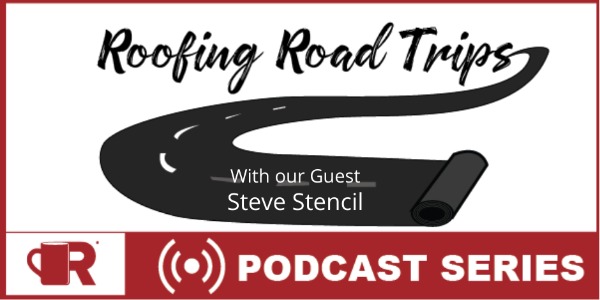
Editor's note: The following is the transcript of an interview with Steve Stencil, founder of Leap. You can read the interview below or listen to the podcast here.
Announcer:
Welcome to Roofing Road Trips with Heidi. Explore the roofing industry through the eyes of a longterm professional within the trade. Listen for insights, interviews and exciting news in the roofing industry today.
Heidi Ellsworth:
Good morning, and welcome to a Roofing Road Trip at Roofers Coffee Shop. This is Heidi Ellsworth, Roofers Coffee Shop partner, and I am here today with Steve Stencil, founder of Leap. I have to tell you, I'm pretty excited about today's podcast. We are going to be talking about sales. One of my favorite topics. So, Steve, welcome to the show.
Steve Stencil:
Thanks for having me.
Heidi Ellsworth:
That's great. Steve, this is our second podcast. We talked a lot last time about starting business startups, which you and I have both been really involved in on different startups in our careers. It's really interesting, I think, when you go back to the beginnings of where you started out and what brought it all together. Maybe you could share with us, share with the audience again just a little bit about yourself and a little bit about how you started Leap, and those initial sales days.
Steve Stencil:
All right. I'll go way back. Sales is in my blood. I remember when I was a kid, I was always number one with the fundraisers selling the candy bars. I was going door to door. Everybody was selling them for $1.00, and I was selling them buy one get one free, they're $2.00 each. I was always trying to figure out a thing. I was always first place in the candy sales at school. In high school, I hated school. I wanted to get out. I was just too bored in school. I wanted to get out early. My guidance counselor said, "Hey, here's a pass. You can do this work study program or you can go to college." I knew I wasn't going to go to college, so I did the work study program. I was like, "Hey, I can go make some money and I can get out of school early."
It was computer information technology. There was a couple of paths you had to take. One of them was computers. I was like... I had an interest in computers. I was like, "Okay, I'll do the computer information technology program and by the 11th grade I can get out early, half day, and go to work." The only asterisk on that was I had to get a job dealing with computers. So, I got a job at my favorite store at the time, which was Best Buy, selling computers. The school had allowed that to be my computer job, my computer information technology job, and I would go to the school... I remember I got out I think at 10:15 every day all the way through 11th and 12th grade. So, I'd go to school I think for two classes and I would get out. I had to go work at Best Buy sometimes. Sometimes I'd work in the evening, and sometimes I was off or whatever.
That was my first introduction to sales, when I was 16 years old selling computers. Some of the best sales training I've ever received to this day had came from Best Buy. When I worked there, this was in the early 2000s, maybe late 90s, 1999-2000, around that time. When I worked there at Best Buy, it was all about the warranties. I remember they had put me in the printer aisle to sell printers first, because they didn't want me selling the computers because that was the high dollar ticket. So, I had to sell these $80.00-$150.00 printers. They really didn't make much money on the printer. They made all the money on the ink, the paper, the cable that they sold you, and the warranty that went along with the printer.
So, I had to figure out hey I'd cut my teeth in sales selling printers. If somebody comes in to buy a $100.00 printer and they're walking out with $300.00 worth of stuff, because I added the ink cartridge and all that stuff to it. I got very good at selling printers, stuck in that aisle, one aisle in the store for three months. Every day I went in, I just went in and sold printers. Yeah. Finally, I graduated to sell computers and I crushed it. Actually, I met my best friend to this day there. He was Best Man at my wedding. His name is Josh, shout out if you're listening. He developed this package selling thing where he would every Sunday Best Buy would come out with their ad and have say three computers in it. The one computer I remember was always an e-Machine computer that was $399.00. You still had to buy all these accessories to go with it. You had to buy a printer cable to get the printer that came with it hooked up. You had to buy paper and ink, and the warranty.
They wanted to sell you the warranty. We created this whole package deal where it came with the surge protector, the paper, and the ink, and everything. The $399.00 package turned into say a $599.00 package. Our department, we were in a small store in Glen Burnie, Maryland, and our department skyrocketed in the rankings in Best Buy as of corporate. We weren't first place, but for the size of our store the percentages and stuff that we were doing were, I think we were in Top 10 of the entire Best Buy organization. So I found myself, I'm like say 17 years old, and I remember Best Buy Corporate, these guys in suits had came. I had to role play with them, because they wanted to know what we were doing that was different than what everybody was, because our department just skyrocketed.
Really, all we were doing was just selling packages. People would come in for $399.00 computer, and we were selling, I call it "Lifestyle Selling" or "Solution Selling". We were selling them a solution that solved all of their needs. We're identifying their problems and their needs, and then we're selling them a solution. As opposed to them just coming in and saying, "Hey, I want this computer," when we ring them up we're saying, "Okay, well what do you want to use it for?" And things like that. "Who's going to be using it? Is it for college? Is it not?" Blah, blah, blah, blah. Then we would sell all the accessories and upgrades that went along with it based on how they answered it.
I found myself demoing them, and I don't know whatever happened of that. I still didn't know I had a talent for sales at this point. I was just there. I was making like $7.00 an hour. I was just happy to get out of school early. I had some extra money. I was living at home. Everything was fine. Then I got recruited. There was a store, CompUSA, people to listening to this might know, it since it went out of business. They were a competitor of Best Buy. I guess word got out through management stuff of "Hey, there's a sales guy in Glen Burnie Best Buy that's really good," blah, blah, blah, and I got recruited to CompUSA. I remember, I got a phone call. I was working at Best Buy. He was like, "Hi, Steve Stencil?" I was like, "This is him," "Hi, you don't know me. This is such and such. Just come down and talk to me," blah, blah, blah.
I was like, "All right, I'll come down for a free lunch," he invited me to lunch. I talked to him. He basically said, "Hey, come work for me and do exactly what you're doing, but you'll work on commission. If you work on commission, you'll make a hell of a lot more money than what you're making now." I was like, "Okay, I'll give it a shot. Let's see." I know what I'm doing, I can do the same thing. So I went to CompUSA and I can't remember how long I worked there, but I basically did the same thing. I just took that packages thing that we were doing and I did the solution selling. At CompUSA, you'd sell a $2,000.00 laptop and you'd make $15.00. You sell a $200.00 warranty, you made $80.00. You know what I mean?
Heidi Ellsworth:
Wow, [crosstalk 00:07:18]. Yeah.
Steve Stencil:
Yeah, the markup in the warranties are crazy. That was what it was all about at that time. Now, they're not that big on warranties I don't think.
Heidi Ellsworth:
I love that, because I love what you're talking about with the packaging, and really figure a solution base. You took that experience and you took it into home improvement, right?
Steve Stencil:
Yep. Yep. My friend, the one who I met at Best Buy, he eventually started a fence and deck company with his father-in-law. His father-in-law installs to this day fences and decks. Josh, he had started a small company to sell fences and decks, and his father-in-law would install them. At some point he called me, "Hey man, you can come sell home improvements," and same thing, he was just recruiting me, "You can come sell home improvements, and you can make a lot more money than selling electronics." I was like, "All right, I'll give it a shot." That was kind of my first introduction into home improvements.
Actually, what had happened is I had went to work for a different company because I wanted to learn the ropes before I went and worked with my buddy. The story goes, I ended up working for them for seven and a half years because I was like, "There's no way I'm going to quit." I was making so much money that I was like, "There's no way I could go work for my buddy. I'm afraid I'll do something wrong, or whatever. I'm doing too well where I'm at. It's just such an easy job and I don't have to worry about anything."
Heidi Ellsworth:
Yeah.
Steve Stencil:
That was my first introduction to home improvement sales.
Heidi Ellsworth:
What I love, and this is what we talked about a little bit in the last meeting, was really talking about how you started taking that same thought process from Best Buy and from doing the packages, and to really put together what it took to close. Obviously, and we talked about this and I encourage everyone to listen to the last podcast, it was so interesting, but that's how you really developed Leap. Leap incorporates all these sales things that we're talking about right now. So, share with us those four commitments. That is... How you put that together.
Steve Stencil:
Yep. When I came out of training, I took my knowledge of what I learned in the computer information technology thing, which was like an Excel spreadsheet course, that's what I got kind of the most out of it. I built an Excel spreadsheet that automated as much as I could within Excel spreadsheet. I did all my pricing, my mash, my payments and stuff like that for the homeowner, my commissions. As far as the sales techniques and strategies that I used, I used a lot of what I learned at Best Buy. Packaging was one of them. I primarily sold roofing. We sold exterior remodeling, but primarily 70-80% of what I sold was roofing. So, we'll just focus mostly on that.
We sold really just one roof system. I was just really good at selling that system. I knew all the ins and outs of it. I knew all of the warranty details. I knew how this thing was manufactured. I knew what materials went in it. This thing was, according to me when I was pitching it to you, it was the greatest roof system that you could ever get. Really, it was really good quality stuff, lifetime warranty. We had upgraded underlayments, we had upgraded ridge vents, we had a decent quality shingle. A really good quality shingle, in my opinion. Then the company that I worked for, they did a really good job installing it. They stood behind it. It was a really good product that I was selling. It was a solution to their problem.
One of the challenges doing home improvements is it isn't fun to buy a roof. It's fun to get a new computer. You come in and want a new computer, you can play games on it, your kids are happy, whatever. You actually get use out of it. A roof, it's like hey somebody steals $10,000.00 out of your bank account and your house feels exactly like it did the day before that your roof was installed. There's a little bit of a challenge to built urgency and build a want and a need for the roof. So, over the course of time I'd figured out... I came up with this thing called "3PT". It's the four bullet points you're talking about, we talked about a little bit on the previous podcast I believe.
It's product, price, payment and timeframe. This is where the seven plus years that I was with that company, I had seen the sales reps come in. The turnover was just crazy. It was like every six to nine months the whole entire sales staff would get turned over. Part of it was because we were a one call closed company, and if you didn't close it that day you didn't close it. There was no follow up. The company had a separate department that did that, and they would go out and a different guy would go out and do rehash and stuff like that. If I didn't sell it that day, I didn't get paid. It's like Groundhog Day every day. Every lead was Groundhog Day. I had to go back and do the same presentation, et cetera.
My presentation that I did with selling roofing or any home improvement project, was pretty much identical every single time. I perfected this thing. I always compared it to a comedian. If you ever go see a comedian more than once, it's literally the exact same thing almost verbatim that they do. I was the same way. I would go into the house and I would say and do the same thing every single time. Then that away... But the other thing, the variable of why customers would buy it or not, would come down to the objections. My objections, I could categorize within four things: the product does not meet their needs, the price is too expensive, they don't have a way to pay for it, so there's my three Ps: product, price, payment. And timeframe. It's just now is not the time that they're ready to do it. They have to pay off a payment, or mortgage, or a car, whatever it is, they got to pay something off. Something happened, or whatever it is, and the timeframe is not there.
I had developed this thing that okay, after I've done my presentation and I get to the point where I put a price on the table... Most of the time, people would put a price on the table, especially if you're selling retail. If you're in insurance, it's a little bit different sales process. They're putting a price on the table, and even if it is insurance like if you were selling upgrades, there's usually some wiggle room there. I would always put my price on the table and make sure I have some wiggle room. That way, I could overcome the objections. My goal was to always tie one of those four bullet points to price. I could always narrow it down. Price was usually always the way to overcome the objection.
Before I would do any discounts or anything, I would give them my price and then I would try and get commitments on all four of my bullet points. So my product, hey is this a product that meets your needs? Do you like what I showed you? When the time comes for you to pull the trigger on this thing, is this a product that you're comfortable going with? By doing it like this, I'm not asking the customer for their business right now. I'm not pressuring them into buying it. I am just asking them, "When the time comes, does this product meet your needs?" All I am doing by saying that is overcoming any objections that the customer can later on tell me, when I am trying to close the deal, they can't tell me "Hey, your product don't meet my needs. That's not what we're looking for," because right then when I'm getting a commitment on my first P, product, those objections are going to come up.
"No, that's not what I'm looking for." "Okay, great. Well, what are you looking for?" Blah, blah, blah, blah, and now I can overcome those objections before we're really turning the screws on the price, before we're dropping our price down. Then payment, so you got product, let's talk about price. We'll go price is second. There's no particular order that you have to do the 3PT. You get your commitments on product. Then I would ask for my commitments on price. I would say, "Okay, based on the information that you have, if there's a price that you'd be comfortable with when the time comes, is this your expectations, what you thought it would be?" Based on how the customer interacts or asks, I have different avenues or paths that I can go to ask them more questions.
Basically, all I'm trying to do is get to them to commit to say, "Yeah, that price is where we were thinking," or "No, that price is three times what I was thinking." If that's the case, then I'm asking them, "Why do you think that?" Maybe they had other estimates. "Okay, great do you have those estimates?" I'm getting the estimates to the table before I'm even at my rock bottom discount of whatever it is, the price that I want to sell it at. I have this "Hey, this is my retail price." I'm asking all these questions before I discount it any further. So, I have other estimates on the table, and I am picking things apart and overcoming more objections like getting again my 3PT, based on the estimates that they have already received.
Then after I get a commitment on price, I would get a commitment on payment. I'd say, "Okay, great. Based on that product and that payment, when the time comes have you thought about how you're going to pay for it?" I want to get a commitment, are they paying cash? If they're paying cash, do that have that money in the bank? Are they going to write a check for it? Are they going to put it on a credit card? I would put our draw schedule out there, "Okay, we ask for a third down and the rest when the job is done. Is that going to be okay when the time comes?" I am overcoming all of the objections that can come along with how they're going to pay for it, because I don't want to start closing the deal and then they say, "Oh, I can't write you a check now. We got to wait for our check to go in," or whatever it is. I am getting a commitment on payment before I am turning the screws on the [crosstalk 00:16:57] today, because I had to sell it today.
Then I would ask about timeframe. Timeframe, I'd say, "Okay, well cool. Based on all of this information, this is the product that you would end up going with when the time comes. You're comfortable in the $10,000.00 price range. It's a little bit more than what you expected, but you see why because of the quality, and the company, and the warranty," and blah, blah, blah. You ask, "Okay, great. When the time comes are you going to pay with a credit card? You have no problems with the third down. When is that time? When are you looking to pull the trigger on it? Is this something you're looking to move forward within the next week? Within the next 30 days? Or is this something that's six months out?" I would always give them kind of an out. I would give them three options, but I would never go more than six months and that was because I had a close for every question.
Every one of those points that I was asking them questions and getting commitments on, no matter how they answered I had a way to close that. I can go over some of those in detail how I used to that. The timeframe window, the way that you overcome timeframe of, "Okay, we're going to do it later instead of now," for whatever reason. I could always overcome with financing. I would always give them three options. "Okay, are you looking to do this within the next week? The next month? Or the next six months? When are you doing it?" They would answer it however they want. No matter how they answered it, if they answered in the worst case scenario of six months, I might ask them a follow up question, "Okay, cool. What's significant about six months? Is there something that's going to happen between now and then," or whatever, just to see if I can get a little bit more detail to kind of shorten the timeframe down.
But worst case scenario, if they answer six months and that was their timeline, I had financing is what I would use to overcome the objection with a six months deferred payment.
Heidi Ellsworth:
Right, yeah.
Steve Stencil:
Financing was such a powerful tool when we were closing deals, because once I got those four commitments then I would reiterate it again, "Okay, cool. Sounds good." Again, I'm not putting pressure on the homeowner. I am, but I'm doing it in a way that they don't even realize it. I'm saying, "Okay, based on what you told me, this is the product that you're going to go with. You're fine with the 10K, you're going to put a third down by way of credit card and pay the rest when it's done, and we're looking to pull the trigger in this within the next six months. Do I have that accurate?" They say, "Yes." You say, "Okay, cool. Just so I'm clear, the only thing separating us from doing it today and six months from now, is just that you can't pay for it in six months because of whatever the reason was, you're paying your car off, you have five more payments and you're going to use the money from that to pay towards the roof," or whatever it was, whatever their objection of why it was six months.
Then they would say, "Yes, hypothetically if we didn't have to pay for six months it would make sense to buy it now instead of later. The only reason we are buying it-" so basically, I am eliminating every other objection by doing this 3PT thing.
Heidi Ellsworth:
You know, Steve, before you go on I think it's really important to point out too that to me, what you're talking about is you're really listening to that homeowner, right?
Steve Stencil:
Mm-hmm (affirmative).
Heidi Ellsworth:
I have sat through sales presentations before where I just didn't feel listened to. If I'm not listened to, then I'm really not interested in doing business with that salesperson. But you're not only listening, you're asking the right questions so that they can actually think through the process and make sense out of something that they're only going to do maybe once or twice in their lifetime, buy a roof.
Steve Stencil:
Right, I used to say that all the time. I say, "This is a foreign process to almost every person you're selling to." They have never bought a roof before. It's completely foreign to the way they buy everything else. Buying habits have even recently changed more. Everybody's buying stuff online now [crosstalk 00:20:54] if retail stores are closing like crazy. I can't really think of many things, somebody comes to your house and you buy. How many times are people spending thousands of dollars on something? It's not often, especially $10,000.00+ on something. Then the idea of they have to buy it without even seeing it. A roof, you're buying off a two foot, three foot by three foot board [crosstalk 00:21:22] he's showing you all these different pieces to it. You have no idea what it's going to be, and you got to pay him money before he even starts work and wait sometimes weeks before any work can even get started.
Then, they're tearing all the shingles and all that stuff off your roof and you're like, "Man, I hope it's going to be okay," once they put it all back together-
Heidi Ellsworth:
[crosstalk 00:21:42] protects your family, right?
Steve Stencil:
Yes.
Heidi Ellsworth:
This is where it protects your family. People who think they're going to go into the sales process and not understand that, and not also listen to what is the fears and the pain points of these homeowners, that's what I love about your 3PT. I think it creates the right questions and then if you listen, it takes you to the next step. I love it.
Steve Stencil:
We had so many sales reps that would come in and they would train on how to do the presentation. You can train pretty much anyone to do a great presentation. Matter of fact, I wouldn't even say my presentation was the best. It was good, but there were other people that would do a presentation that was way better than mine, because over the years I had taken shortcuts, figuring out "Okay, well this don't work as good," I wanted to save us a little bit of time. I was just being lazy. I'm reading the body language saying, "Okay, this might not matter as much." But if you do the same exact thing every single time, you do a masterful presentation, the sales reps would come and they would do that. They would get to the point of closing the deal. They would get that customer that says, "Okay, no." They would get a no, and then they were like a deer in the headlights. They didn't know where to go from then.
Heidi Ellsworth:
Right. Right.
Steve Stencil:
That's where a ton of them struggled, because you would get what we called "lay downs". You would get the people that would just buy from anyone. Actually, I used to rank things. It's one of the things that kept me sane as a sales rep, because especially when you're doing one call closes, your failure rate is much higher than your success rate. As a matter of fact, I think the average was 33-35% or whatever. I think by the time I was done, I think my average was like 45-48% is the deals that I was closing in one call. We were not the cheapest. We were one of the most expensive. I remember there were times I would go in and price a roof, and we were two or three times more than the next guy, sometimes. It's like we'll jump in the truck. We'll come out to install it.
The sales reps would come in and I would to try to explain to the 3PT. Some of them would get it, and I would say, "Hey listen, before you do all your discounts and you're at your rock bottom minimum, you have to have those commitments on the 3PT, because if you don't have those commitments on 3PT and you drop your price, you're still going to have to come back 3PT. But now you have to come back to them with no ammunition because I have tools that can-" your only tools to really close the deal are going to be drop the price and offer some kind of financing option. That's how you want... You want to back all of those objections that can come out of a 3PT. You want to back them into that... Those are your tools to close: drop your price or offer some kind of financing option. You need to make sure you have that in your deal when you get to those objections.
Heidi Ellsworth:
Yeah.
Steve Stencil:
That's where I found so many reps would fail, is they would come out of the gate, they're all bright eyed and bushy tailed, they're doing a masterful presentation straight out of training, they're going through, and they would get deals here and there. I used to rate them on a one through five to keep myself sane as a sales rep, where a one and a two... I would rate my leads one through five. A one and a two, pretty much anyone can close those guys. One is a lay down, you can just go there. They're going to sign right up no matter who pitches the deal. A two, you need to have a little bit of skill. A five, nobody's selling. They're the people that you just don't even worry about those leads. You're going to get them, you're going to run them, you're going to do your pitch, and no matter what you say or do, the customer is just going to say no.
Heidi Ellsworth:
[crosstalk 00:25:14] already, or they're just kicking tires.
Steve Stencil:
Yep, and those are the ones that the sales reps always want to dwell on, that nobody's going to sell those guys. The threes and the fours that I would rate, those are the ones I separated the super high producing reps from just the average reps. If you can close threes and fours consistently, then that's when you're getting into the 45, 55, 65% closing rates because you're able to convince those guys. Those threes and fours are buying from somebody, and if you're able to go out there and sell them, you're going to be a super successful rep.
Heidi Ellsworth:
One of the things that we talked about last time, and that you're very adamant about, is practice.
Steve Stencil:
Mm-hmm (affirmative).
Heidi Ellsworth:
That sales people should practice. Talk a little bit about that. How did you practice? I'm hoping out there right now there are some young people who are interested in sales, who are listening to this podcast and thinking, "Wow, yeah that makes total sense." Let's talk a little bit about the practice element and then how Leap helps bring all this together on some of the sales stuff.
Steve Stencil:
I remember when I first came out of training. Initially, I was trained on windows. When I came out, I was used to selling electronics. I never did in home sales. It was a different environment than me. I was used to customers coming to me, now I'm going to customers. The way that I practiced was I came out of training and I scheduled some mock demos with people that I knew: family members and friends of family members. I remember I pitched my mom. It was funny, I remember I pitched my mom. I came out of training selling windows. At the end of it she goes, "How do you guys sell these windows this cheap?" I'm like, "Mom, I didn't even do my discount yet." I was like, I created so much value and stuff. I was pitching her a window like $1,200.00 or something like that. She had no idea about windows. She had no idea how much they cost. She's never bought them before.
Steve Stencil:
I told her I was learning this new job, blah, blah, blah, and I just wanted to pitch her just to practice. I remember at the end she was like, "How do you guys sell them so cheap?" Because I created so much value in the window. I was like, "Well, really it's not $1,200.00. It's $600.00," or whatever it was. I can't remember. I remember I think I pitched my uncle. I pitched one of my mom's friends. I think I pitched my wife's grandparents. I had done five or six pitches or demos from beginning to end before I even ran my first lead.
Heidi Ellsworth:
I love it.
Steve Stencil:
That's how I was like okay. I made sure that I was ready when I went to the house, and then throughout the years we would have meetings multiple times a week. For a while there, we were having them every single week day. We would go around the table and people would talk about their previous leads, the ones that they ran. This is kind of where the ratings one through five kind of came, because really I didn't even really care about the fours either. But the fives, definitely. "I don't want you talk about the fives, because nobody's going to sell them. You can complain until you're blue in the face about this person and how they would have never bought no matter what you had done. Let's talk about the twos, threes and fours, the ones that you could have sold."
Heidi Ellsworth:
Right.
Steve Stencil:
When we would go around the table I would ask them, "What would you rate this lead?" We would hold them accountable, because not every lead is a five. If they were to rate it a five, you'd give them a pass. Okay great, nobody's going to close that one. Not all their leads can be a five, and if it's anything lower than that, then you've got to talk, "Okay, well somebody would have closed that. Somebody could have closed that on a one call close. What are the objections/reasons?" They would give us some objections or they would tell us the objection, and they're always the same things. You can always tie them back to the 3PT categories. It's either something with the product, the price, how they're going to pay for it, or [inaudible 00:29:19].
Heidi Ellsworth:
Yeah.
Steve Stencil:
Always back it into that. Then we had just go to closes. We actually started naming the closes, and we would have a little contest where people would come up with closes. We would call them "The Squirrel" or "The Gambler" or the whatever. They were just go to closes, and literally it got to the point where my brain was just programmed to where as soon as I heard an objection, I would reiterate the objection to try and isolate it to the homeowner, and then I had my close I would go to. I'd say, "Okay, hypothetically-" blah, blah, blah, whatever it was going to be.
Heidi Ellsworth:
Yeah, wow.
Steve Stencil:
That's how we would practice. It was ingrained in us. The sales reps would just go around the thing and you would talk to other sales reps. That's why these forms are cool. You share ideas. There's social media. There're tons of things out there. There's Facebook groups that you can be part of and just answer questions. That's really it. Some of the stuff I came up with just out of experience, but most of it is just me putting pieces together from other sales reps. I remember one of the craziest things was this guy, I can't remember his name, but he came in and there was an objection where one of the commitments we tried to get is "What did you expect the price was going to be?" So, the customer gives you an objection, "Oh my God, that price is twice as much as what I thought it was going to be."
Then you say, my first rebuttal to that is, "Well, what did you expect it was going to be?" Then sometimes the customer will say, "Well, I didn't know what to expect." That was one of the Roundtable things of how do you overcome that? I'm trying to think, well the customer's not going to give you any number. How do you extract one out of them? I said, "Ask them if they were on The Price is Right, and they had to bid a number, hey this new shiny roof and you're sitting on The Price is Right and you had to bid on this, are you going to tell Bob Barker or Drew Carey 'I don't know, Drew. I have no idea what it was going to cost', no you're going to think of a number.
One of the guys had came up with a close, which at the time I cracked up laughing but then I used it and it worked. It worked so well. It sounds so stupid, and people when I say it, are probably going to laugh, but if you try it in the house, it will work. You say to the homeowner... Oh here, I'll do with you. I'll say... You tell me that the price is too high. Go ahead, price is too high.
Heidi Ellsworth:
It's too high. I can't do that right now. Too much money.
Steve Stencil:
Okay, I'm going to ask you, "Well, how much did you expect it was going to be?" And just say, I don't know-
Heidi Ellsworth:
I don't know. I don't know, it just seems like a lot.
Steve Stencil:
Well, if you did know, how much would it be?
Heidi Ellsworth:
I don't know... I mean, yeah.
Steve Stencil:
See, that's perfect. See, you had to sit back and think about it because-
Heidi Ellsworth:
Yeah, that was great.
Steve Stencil:
Yeah, so when he said that, I cracked up laughing. It don't work 100% of the time, but it at least makes people... You just say, "Well, if you did know how much it was going to cost, what would it be?"
Heidi Ellsworth:
What would it be? That's awesome.
Steve Stencil:
Yeah, we cracked up laughing in the sales meeting. I was like, "Hey, I'll give it a shot and see what happens." I ran a lead, and a couple of leads after that. That came up and I'm sitting there and I'm like at the end of my rope, okay well what's the next thing I can say to this person? I tried every other thing that I had. I said, "Well, if you did know what a price was going to be, what was it?" They're like, "I don't know, 12 grand." That's perfect. That's the exact answer that I wanted.
Heidi Ellsworth:
That's what I wanted.
Steve Stencil:
Yeah. As far as practice, it was just talking with other reps, different scenarios, "Well how did you overcome that?" People would come in, they sold a deal, you would ask them "How did it go? Did you get any objections? How did you overcome that?" And I'm just picking the pieces apart and role playing was a big thing. A lot of people don't like... I'm used to it. I remember when I first started I hated it. When I worked at Best Buy, they always had us do role playing and I was embarrassed or whatever. But then you get to a point, and I think the reason people are afraid to do role playing is because they aren't confident enough, especially doing role playing either with somebody who knows just as much or more than you about sales, or doing it in front of peers who know about what you're doing, it's always a challenge because you don't want to say something wrong.
But that's really the point of it. If you do that, you'd rather say something wrong while you're doing a role play as opposed to when you're sitting across the table from the homeowner and you're going to lose the deal. [crosstalk 00:33:27]. We would actually have a pitch off, that reminds me... Sorry to cut you off.
Heidi Ellsworth:
No, it's good.
Steve Stencil:
We would do pitch offs where the company every so often would do a thing. They'd bring, it wasn't much, they'd bring some money, $100.00 or whatever, to the winner, or maybe a gift card or something like that, and we would have all the sales reps come in and do a pitch off where the sales manager would sit in front of the room and he would be giving the objections, and the sales rep would have to overcome those objections and try and close the deal. It was just everybody would do a role play. Then we had judges, like the marketing manager might be a judge, and a call center rep or something like that, of who did the best job on pitching the deal.
Heidi Ellsworth:
See, that makes total sense to me, and really working with other sales people. I also love the part where you went actually to your family and practiced. The resources that I am seeing coming out of Leap, what I'm seeing right now is just like this, it's not just about buy our software. Your kind of doing the exact same thing with Leap as a company that you've done your whole life and your whole career with sales, is that you've put a whole package together. I see the webinars, the podcast, the training. You really are working with and creating a network of sales people to kind of talk to each other. So just kind of to take us home on this as the last part, Steve, share with us what's happening in Leap kind of that follows this trend of your sales experience.
Steve Stencil:
We consider ourselves thought leaders. Leap is at the tip at the sphere with technology, and one of the awesome things about our industry is that there's a huge opportunity to adopt technology in your sales process, in your business as a whole. There's so many things that you can do to automate, to make you look more professional in front of the homeowner, to make it easier to train, recruit, hire sales reps or really anybody for that matter, to increase your profits. There are so many things that technology can do, and that's kind of like Leap. We made it where it streamlines your entire sales process. Everything I talked about, there's a lot of other stuff under the hood that goes along with the sales process. It's not just closing deals.
Leap is a technology that just helps you digitize and automate all of that. We also, like you mentioned, we had started the podcast as well, our own podcast. We're just assembling thought leaders, other business owners, different partners in the space just to hear their perspective and ways that they're doing things. COVID was a big thing. We had a bunch of webinars and stuff about COVID and how people were navigating that, and how companies are staying alive. Our industry seems like it's actually booming during the COVID environment. People are staying home, and they're identifying things that need to be done around the house. I'm guilty of it. My office that I'm sitting in right now, I'm working from home since March, I completely remodeled: painted, put new carpet in, and all that stuff because man, I'm spending so much more time in here I want to make it look nice.
Yeah, we're doing the webinars. We did the podcast. We're constantly trying to put out content/blog posts of just helping people in the industry. It's like, "Hey, it's not just about buying Leap and implementing that into your business." We're saying, "Here's all kinds of information. You can take what you want from it." A lot of the big speakers, we used to always go to the trade shows and they would have the speaker that would sponsor all the trade shows. They were so fun to go to, but obviously they're not having those no more. So, I'm trying to adapt and push content out there that can help people in other ways.
Heidi Ellsworth:
[inaudible 00:37:01]. Well Steve, I love it. I love this, and I'm just kind of guessing already that we'll be doing another one in the new year because we've got to keep going on this topic on sales.
Steve Stencil:
I love it.
Heidi Ellsworth:
What I would want to say to everyone who's listening to this, if you're a new salesperson, this is the kind of stuff you need. This is really that 3PT is on. Take time to re-listen to this. Reach out to Leap. Talk to Steve. Talk to the team there. They are awesome in helping to overall to be a part of it. You can find articles, podcasts, everything both on Roofers Coffee Shop, where Leap is in there in the directory and throughout the whole site, through social media. You can also find of course everything at Leap. This is the kind of stuff that can make and break careers, as far as I'm concerned. Steve, I just think it's awesome that you shared this so willingly out there with everyone.
Steve Stencil:
Yep, awesome. I'm glad I could do it. Thanks, Heidi.
Heidi Ellsworth:
Thank you. Thank you everyone for listening to this podcast today. Again, be sure to listen to all the podcasts. The first podcast that Steve and I had went through all how Leap was made, how the sales translated into technology. You got to listen to Steve's story. It's really cool. So, if you haven't heard the first one, go listen to that and all the podcasts that are under the Read, Listen and Watch section of Roofers Coffee Shop.
Announcer:
Make sure to subscribe to our channel and leave a review. Thanks for listening. This has been Roofing Road Trips with Heidi from the RoofersCoffeeShop.com.
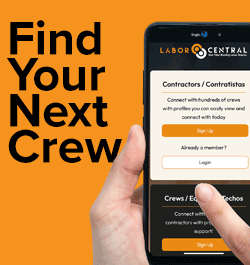




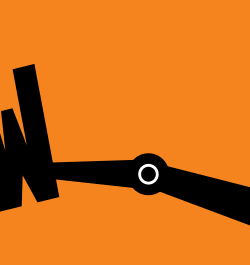







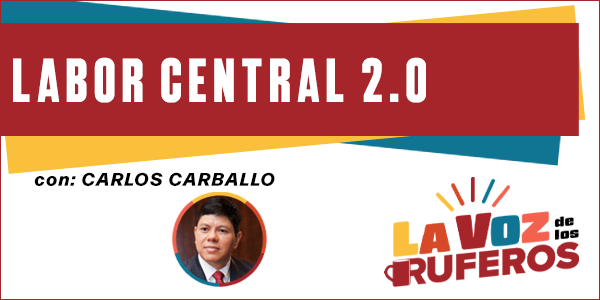
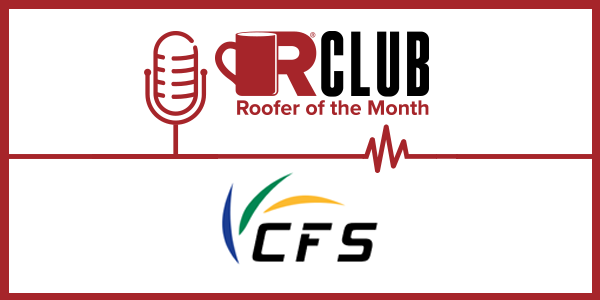
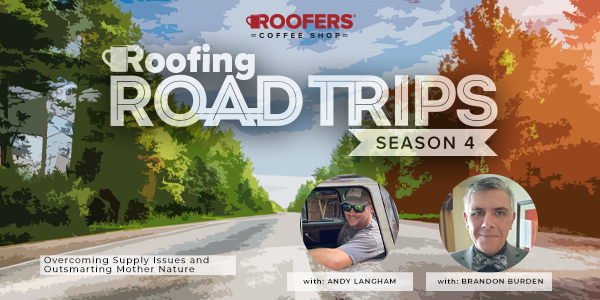


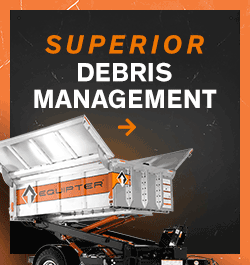


Comments
Leave a Reply
Have an account? Login to leave a comment!
Sign In